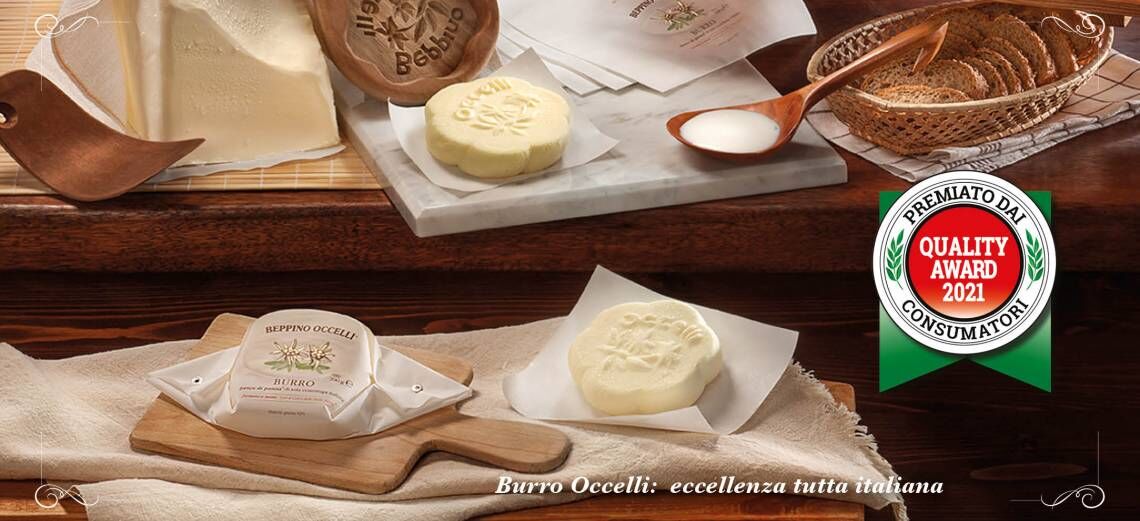Stories
Beppino Occelli’s Butter Awarded by Italian Consumer with Quality Award 2021

For forty years now, this product has been a symbol of quality and represents the Piedmontese gastronomic tradition in every way. It is made exclusively from Italian centrifuge cream and is appreciated even outside Italy, where it has also received important awards from two of the most important food magazines in the world, which we quote below.
Wine Spectator, Usa, 2000: Occelli’s butter first prize among the thirteen best butters in the world.
"Beppino Occelli butter is best tasted raw on a baguette or simply on its own and is by far the favourite"
(Tested among the thirteen best butters in the world, Wine Spectator, USA)
The Guardian, Great Britain,2002: Occelli’s butter first prize among the 5 best butters in the world.
“ It is so good that it can even be eaten on its own”
In 2021, it also received recognition from Italian consumers, who rewarded Occelli Butter for its quality with the
Quality Award 2021.

Two interesting things about butter: it seems that its first users were the Indians; in the past, its use went beyond the purely culinary: butter was also used to protect ships, as a skin care product and as a power source for lamps.
Then, interesting is the use of butter by the Tibetans, who used it during their sacred hymns to propitiate gods by offering them barley fried in butter, as well as melting it in tea to obtain an energy drink.
Did you know that also Julius Caesar was impressed by the goodness of butter?
It happened during a celebration on Italian soil, probably in present-day Milan, where he tasted one of his favourite foods, asparagus, cooked in butter.
But, going back to the traditions of the past, especially those of Piedmont, how was butter produced?
Obviously by hand, using a tool called Churn , also called “biròla” or “burera” in Piedmont. This is a box made of oak wood (it could also be made of aluminium or galvanised copper), fitted with a plunger, into which the cream was poured, obtained from the milk milked in the evening by farmers and shepherds and left to rise to the surface in special basins overnight for 8-12 hours; with continuous agitation of the churn plunger (for about 2 hours), butter was made. This custom was widespread in Piedmont and throughout northern Italy until the middle of the 20th century.
But it is another ancient tradition that Beppino wanted to recover and maintain: the use of wooden casts.
In ancient times, butter sticks were shaped using wooden casts engraved with a chisel adorned with animals or flowers or expressing good wishes. Hence Beppino Occelli's famous cast with the image of a cow or edelweiss.
As you might expect, the inevitable technological progress has meant that this instrument has fallen into disuse for decades now, but this is exactly where Beppino Occelli's will and strong desire to maintain a link with the traditions and customs of the past comes in.
How?
Special attention is always paid to the quality of the raw material and then, as already mentioned, the choice of milk processing method to obtain butter, the least widespread in Italy today, but the one best suited to keeping the organoleptic properties of the product intact, i.e. the centrifuge process, preferred to the creaming process.
So if you share Beppino Occelli's philosophy and love the quality of his butter, here is a selection of our tastiest recipes, which will allow you to make an unforgettable Occelli butter dinner!
